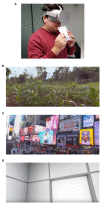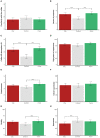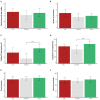Virtual Terroir and the Premium Coffee Experience
- PMID: 33815192
- PMCID: PMC8013734
- DOI: 10.3389/fpsyg.2021.586983
Virtual Terroir and the Premium Coffee Experience
Abstract
With its origin-centric value proposition, the specialty coffee industry seeks to educate consumers about the value of the origin of coffee and how the relationship with farmers ensures quality and makes coffee a premium product. While the industry has widely used stories and visual cues to communicate this added value, research studying whether and how these efforts influence consumers' experiences is scarce. Through three experiments, we explored the effect of images that evoke the terroir of coffee on the perception of premiumness. Our results revealed that online images that resembled the broad origin of coffee (i.e., a farm) could influence premiumness expectations of coffee (Experiment 1). Similarly, a virtual reality environment that depicted this broad origin (vs. a control but not a city atmosphere) could enhance the perception of coffee premiumness for non-expert consumers (Experiment 2) and the enjoyment of the experience for coffee professionals (Experiment 3). Importantly, we found that congruence between the coffee and the virtual reality (VR) atmospheres mediated how much non-experts enjoyed the experience (Experiment 2). VR atmospheres also influenced expectations of sweetness and acidity for non-experts (Experiment 2). These findings serve as a steppingstone for further exploration of the effects of congruence between visual cues and product/brand attributes on premiumness expectations and perception, and more generally on consumer experience. From a practical standpoint, this study provides insights into key aspects for the development of immersive virtual product experiences.
Keywords: atmospheres; coffee; consumer experience; origin; premiumness; terroir; virtual reality.
Copyright © 2021 Barbosa Escobar, Petit and Velasco.
Conflict of interest statement
The authors declare that the research was conducted in the absence of any commercial or financial relationships that could be construed as a potential conflict of interest.
Figures







References
-
- Aichner T. (2014). Country-of-origin marketing: a list of typical strategies with examples. J. Brand Manage. 21, 81–93. 10.1057/bm.2013.24 - DOI
-
- Algharabat R. S. (2018). The role of telepresence and user engagement in co-creation value and purchase intention: online retail context. J. Internet Commerce 17, 1–25. 10.1080/15332861.2017.1422667 - DOI
-
- Animesh A., Pinsonneault A., Yang S. B., Oh W. (2011). An odyssey into virtual worlds: Exploring the impacts of technological and spatial environments on intention to purchase virtual products. MIS Q. Manage. Inform. Syst. 35, 789–810. 10.2307/23042809 - DOI
-
- Babin B. J., Attaway J. S. (2000). Atmospheric affect as a tool for creating value and gaining share of customer. J. Bus. Res. 49, 91–99. 10.1016/S0148-2963(99)00011-9 - DOI
LinkOut - more resources
Full Text Sources
Other Literature Sources

